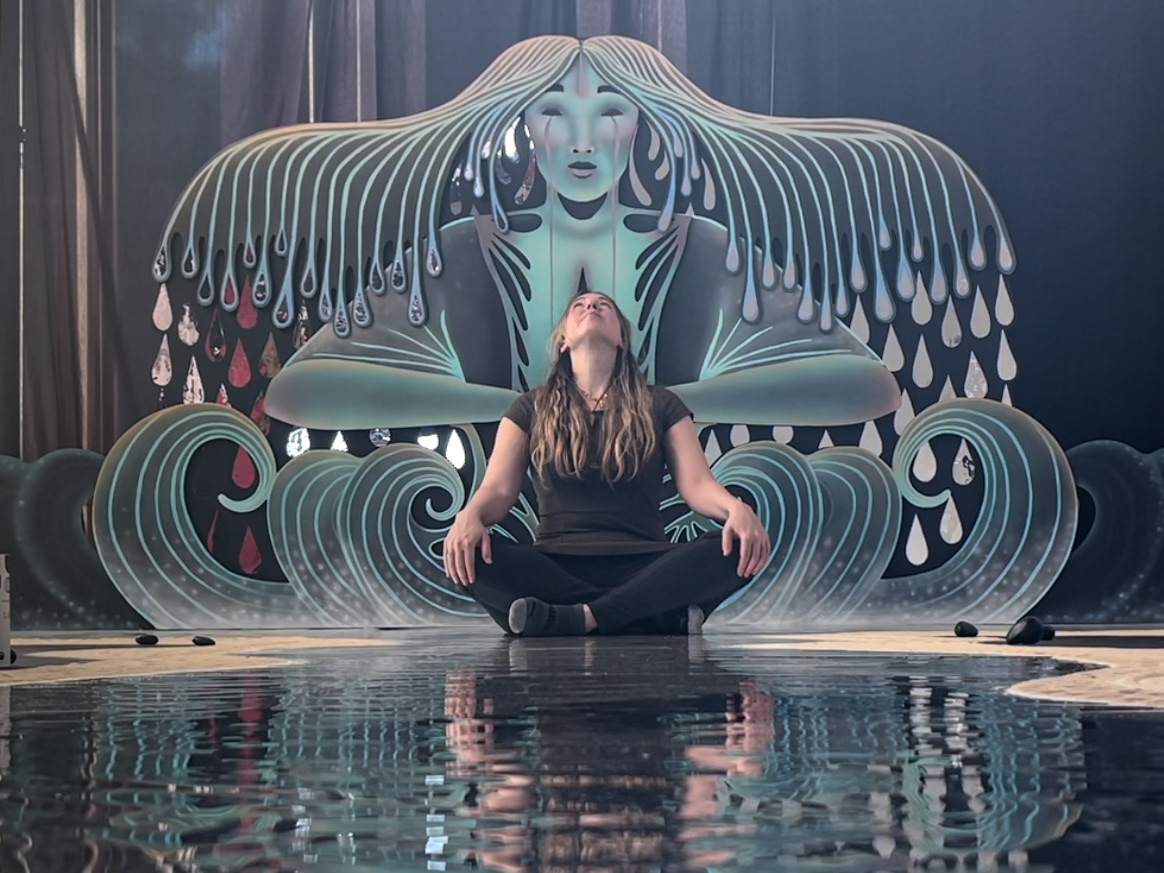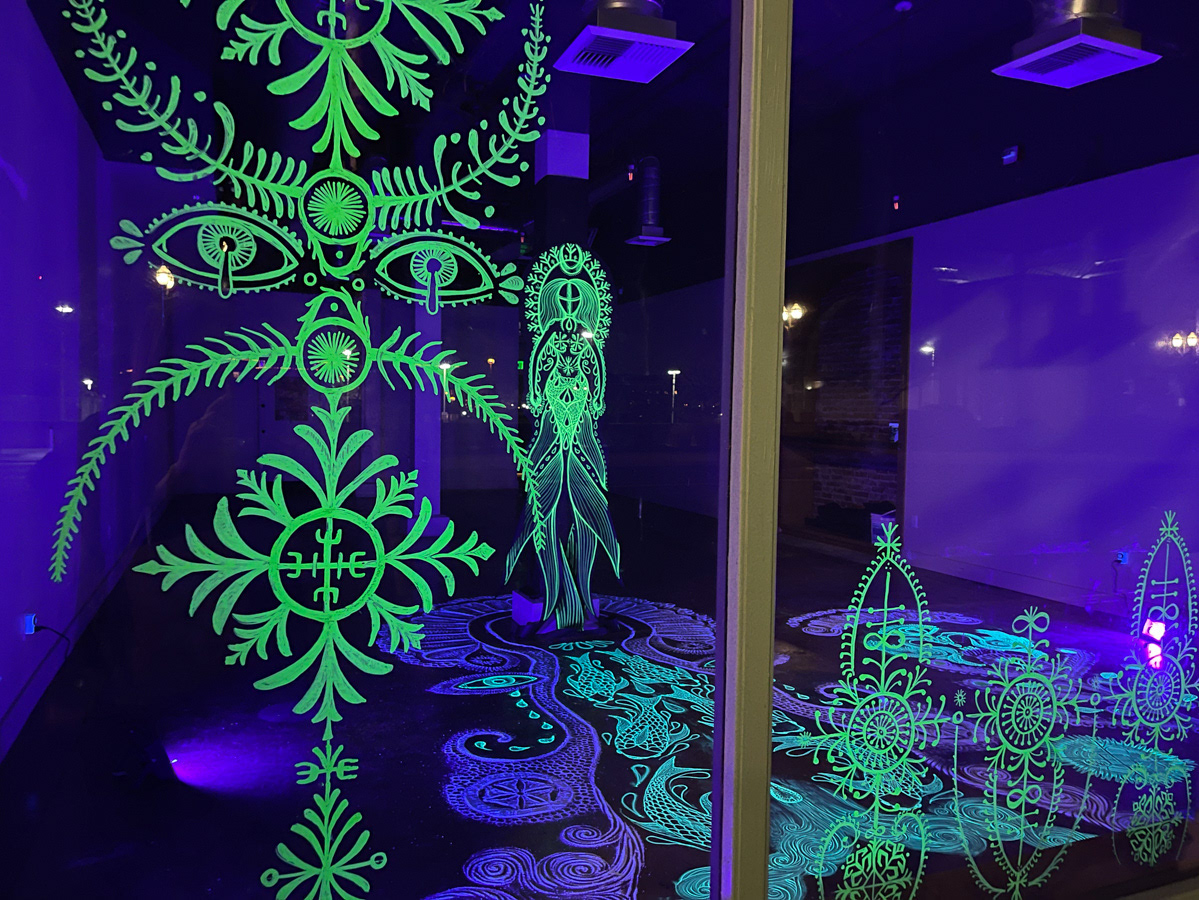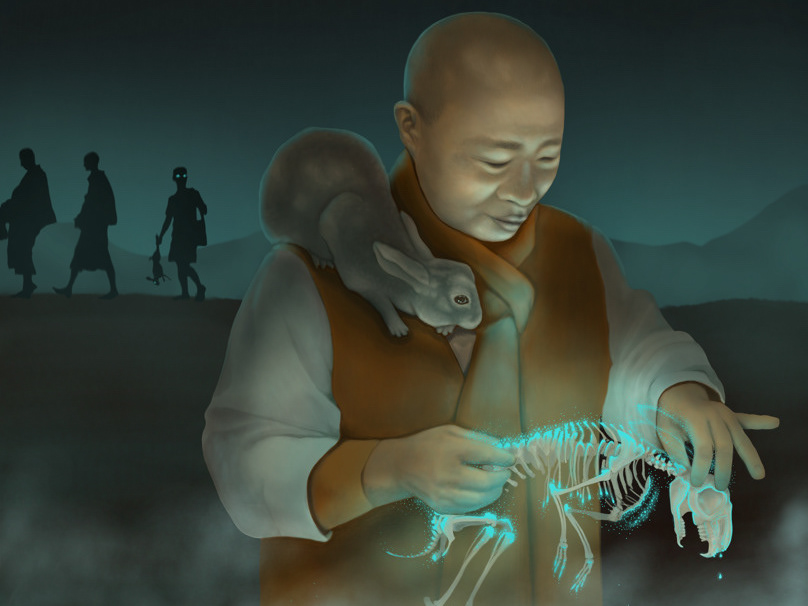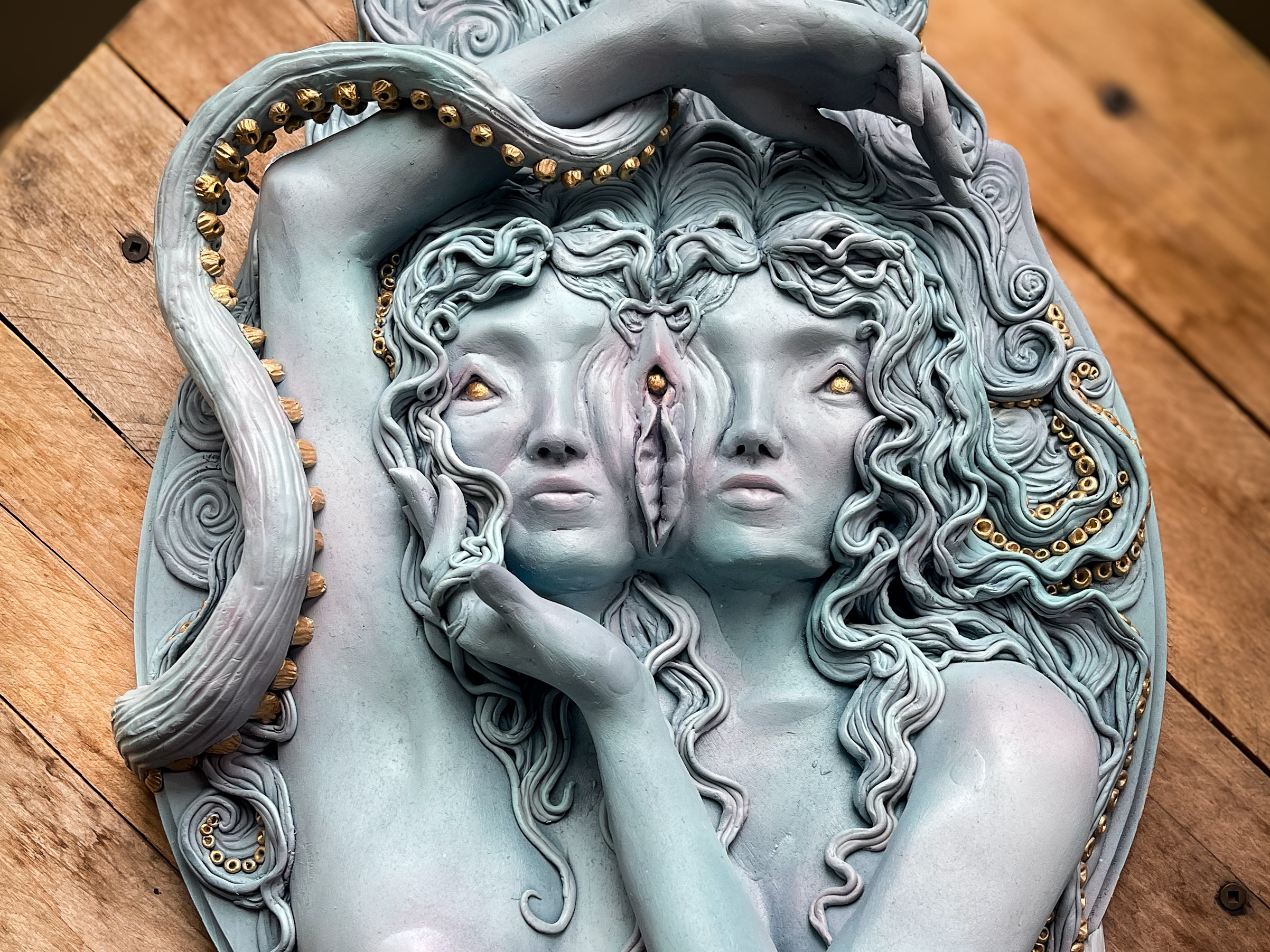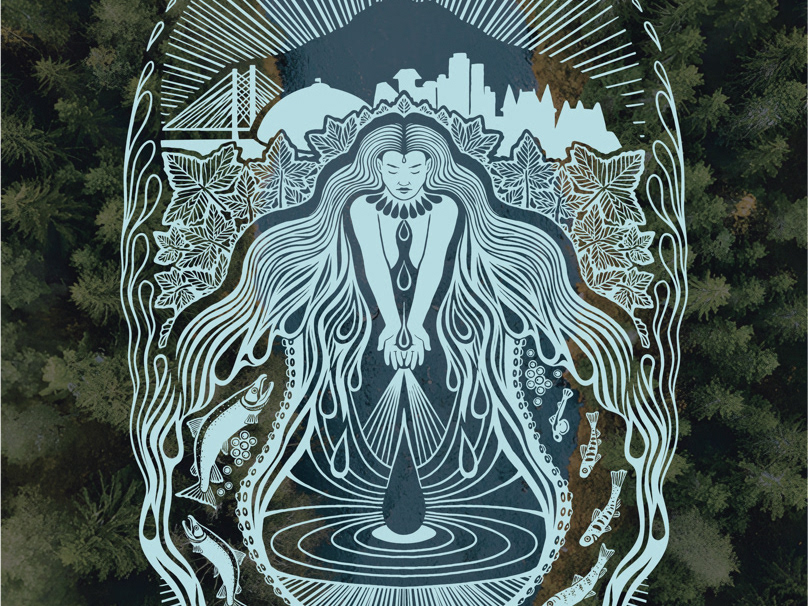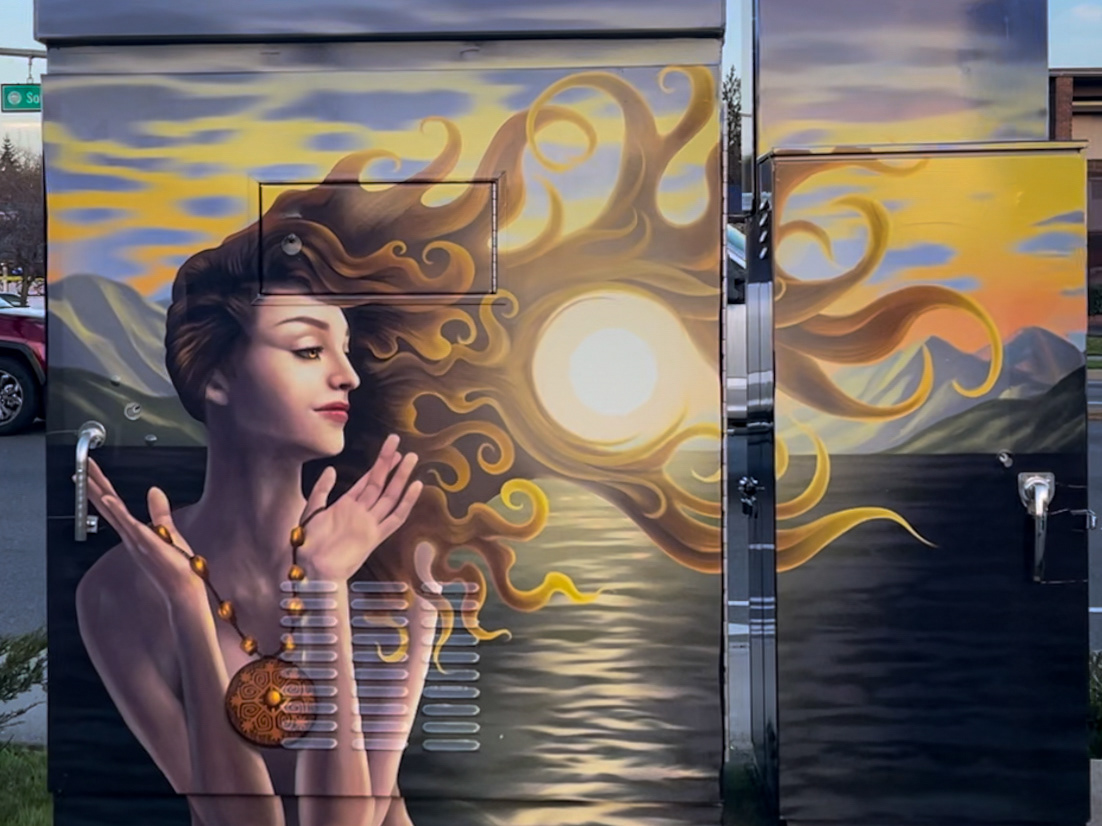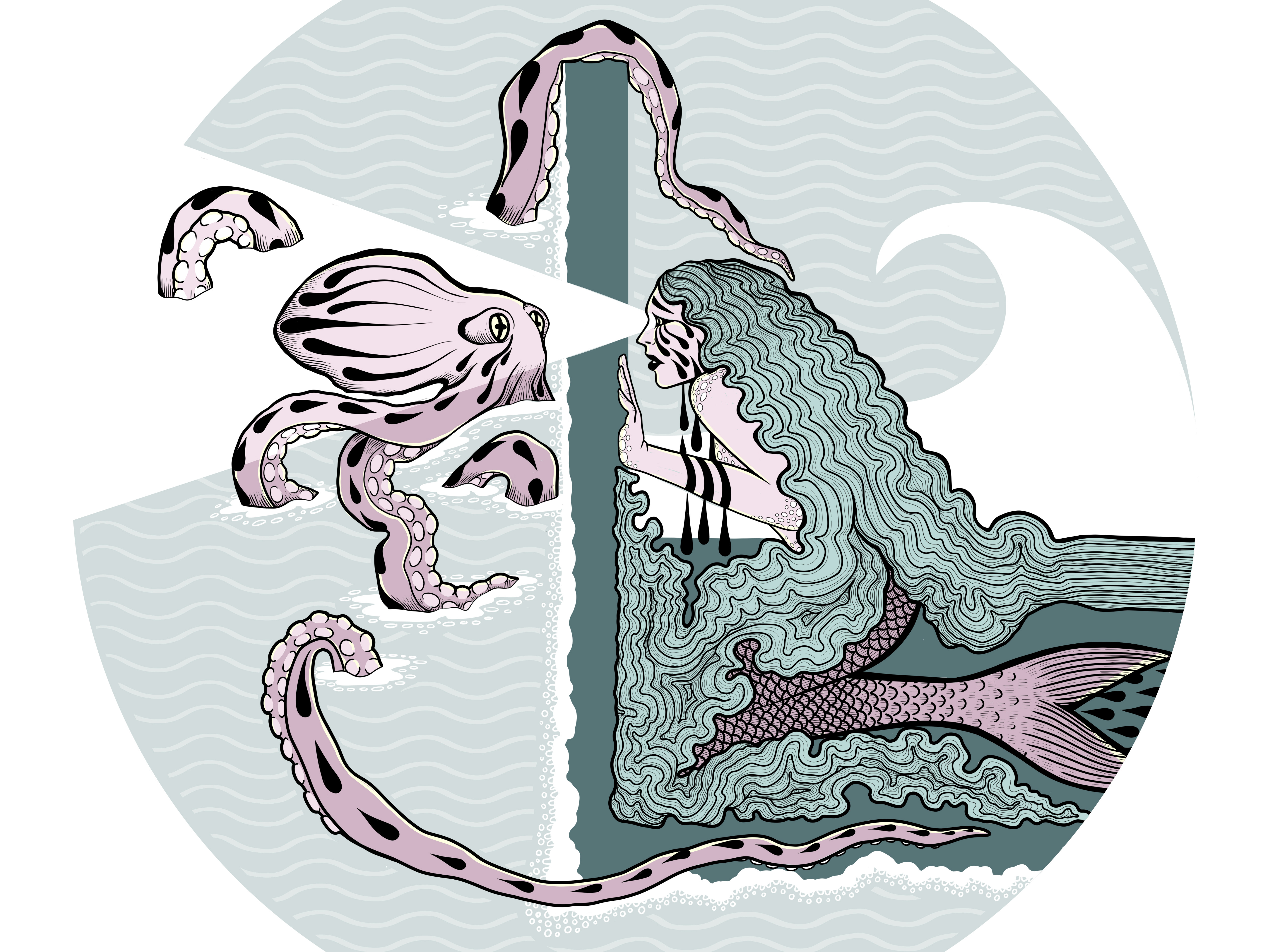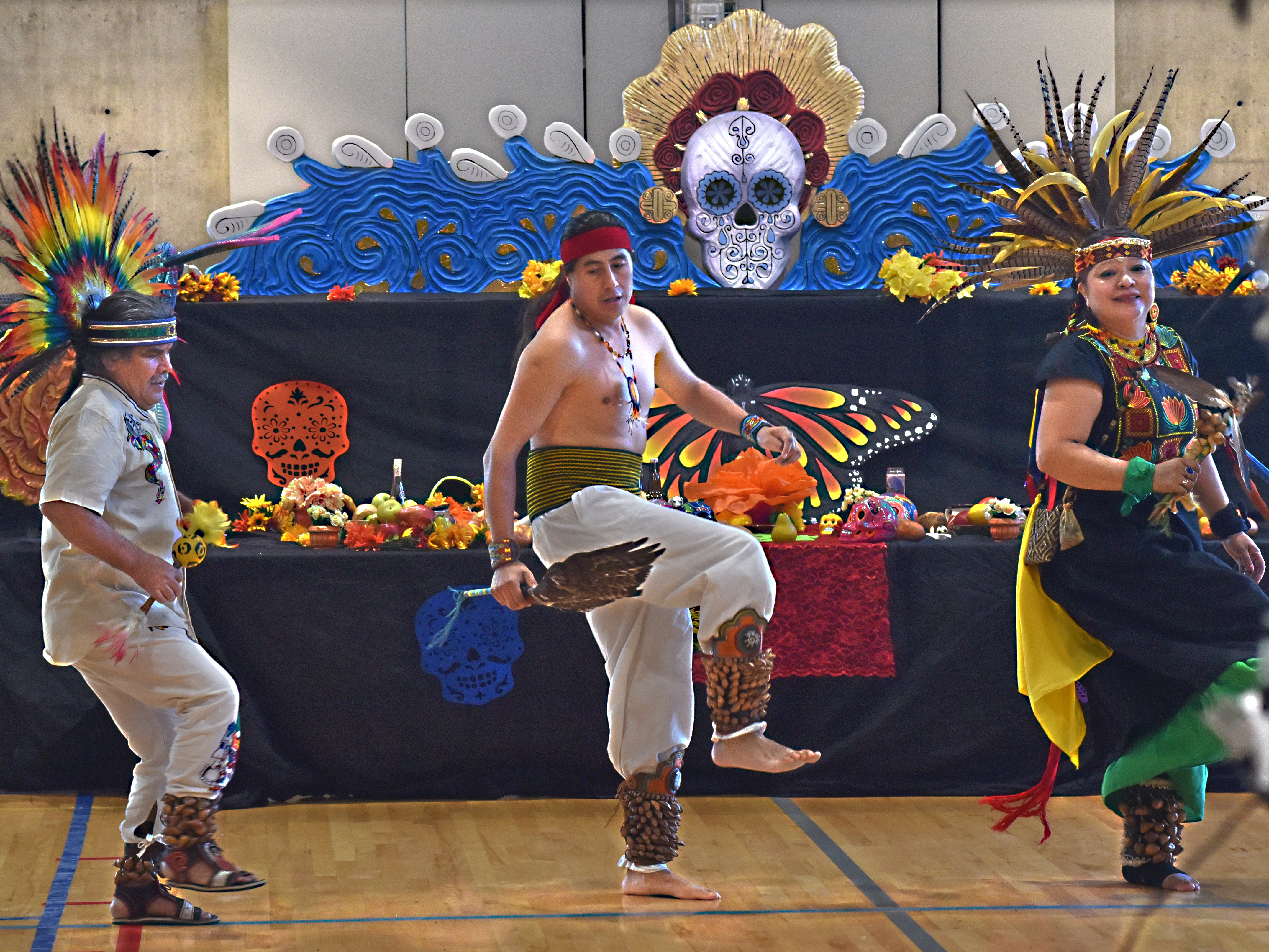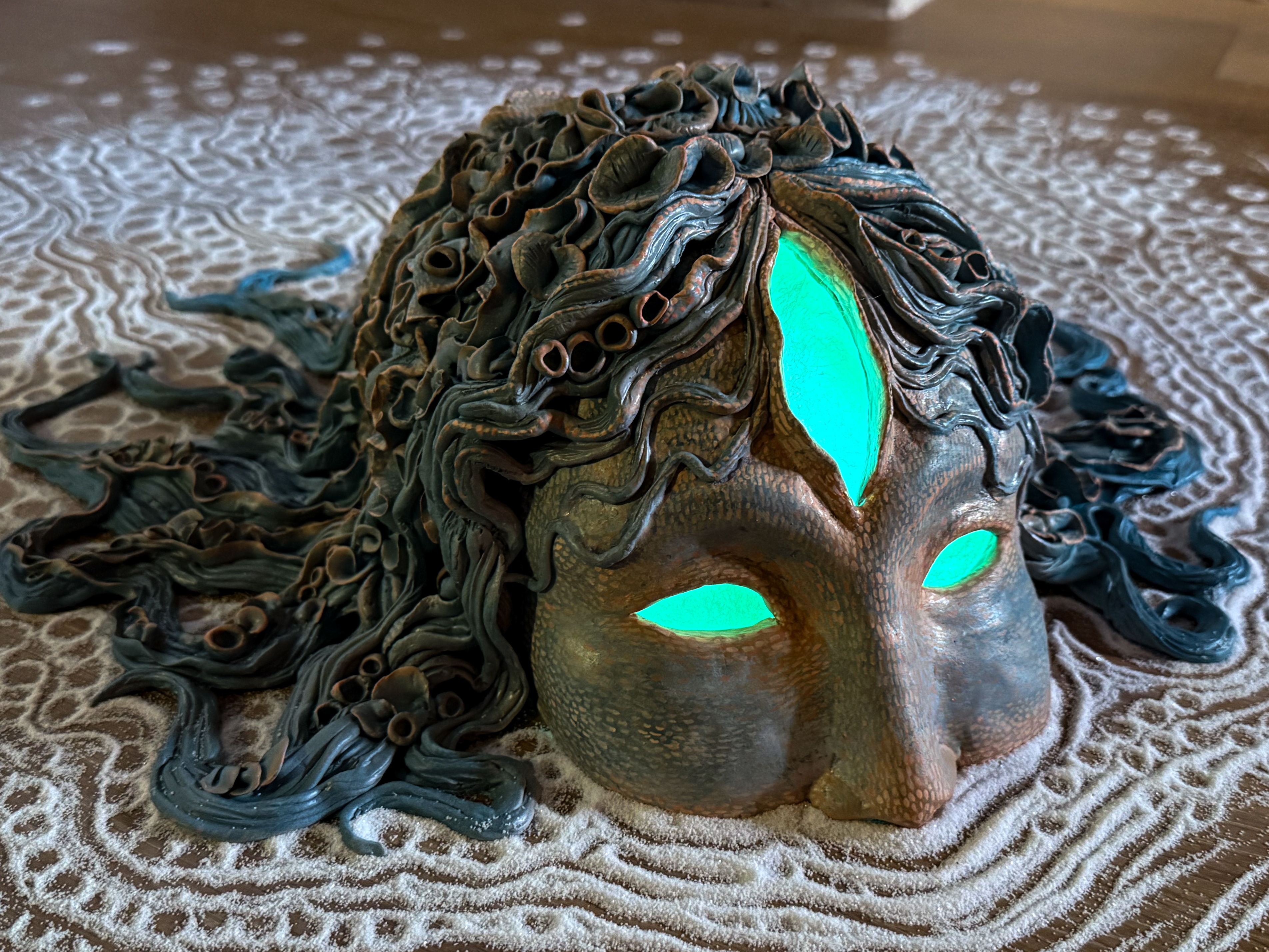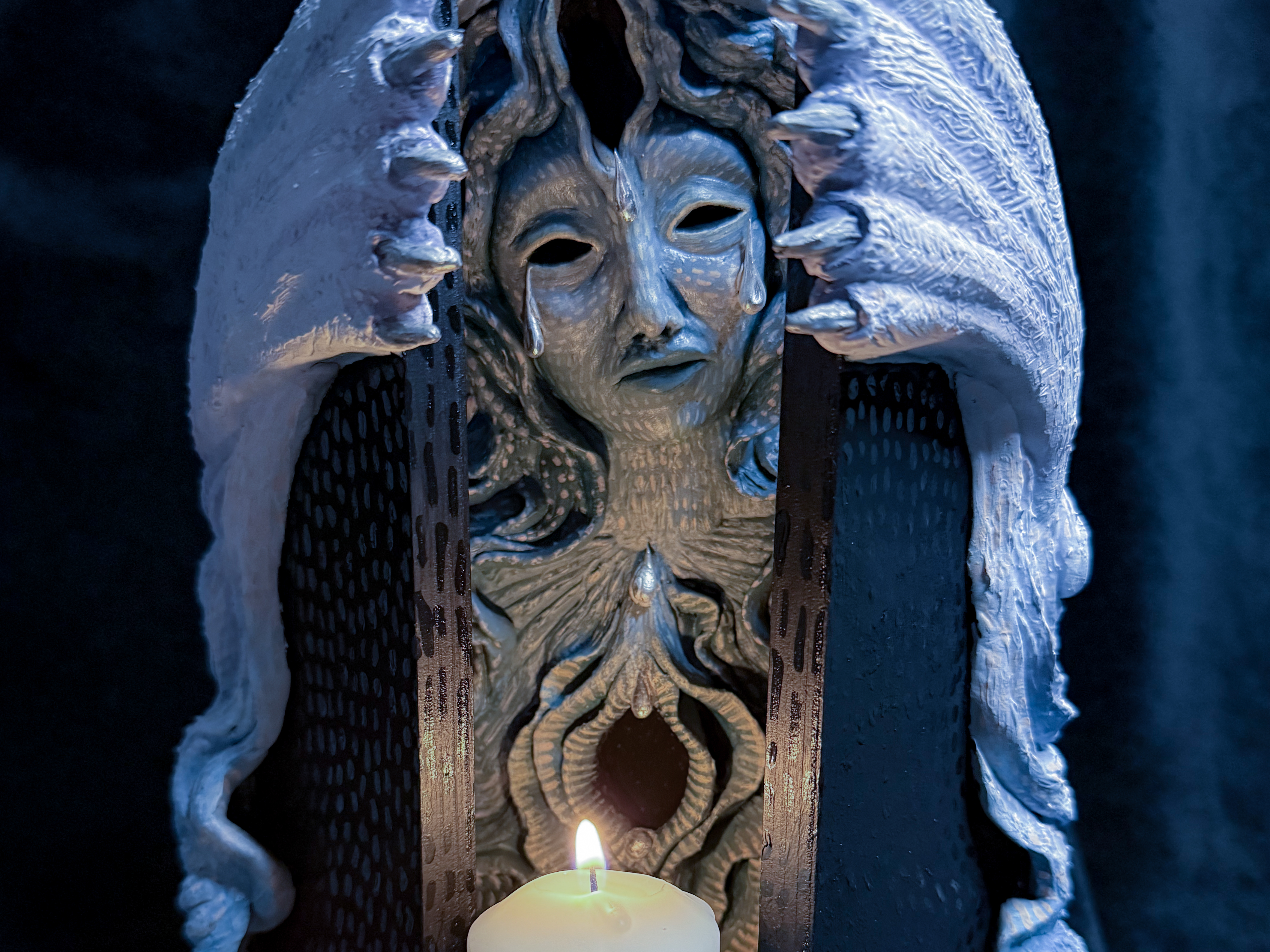Mother of Waters, a permanent mural at the Foss Waterway Seaport Maritime Museum in Tacoma, WA.
Who is the Mother of Waters?
In this case, she is the mountain that births the waters in the Puyallup watershed. Her hair, floating upward with raindrops at the tips, is in the shape of the disk-shaped lenticular cloud that first hovers over the mountain when rain is on the way. Melting from her snowpack flow rivers that wind down her mountainous sides into our plains, valleys, and forests, curving and bringing life to everything they touch. Along the way, these rivers birth salmon into the ocean, where they'll live full lives and come back up the river toward the mountain again when they reach the end of their cycle.
This mural is a love letter to our local mountain and her watershed, and a reminder of how connected we all are to her and to each other. She reminds us that she is not just a faraway backdrop in our lives - but rather our literal mother. That we are mostly made up of the water she births, and that even the air we breathe has vapor that is a part of this ancient cycle.
This mural is inspired by the indigenous nations that have lived around the mountain since Time Immemorial, each with their own relationship with her and words to describe her, and it is my hope that those who see and feel touched by this connection will better understand the importance of respecting and supporting indigenous sovereignty.
This mural is also inspired by traditional stories around the world that recognize the sacredness of water and the role of mountains and rivers in birthing it into watersheds. This was at first my attempt to create my own concept of the Latvian māte, or animistic mothers that birth the natural world around us, including Upes māte and Ūdens māte (Mother of Rivers and Mother of Waters). It is also inspired by animistic water mothers such as Chalchiuhtlicue, Oshun, Mami Wata, Yemọja, Umm-Al-Maa, Saraswati, Damona, and more.
Understanding our waters and watershed through a lens of personhood helps us feel closer to the concept, and can help heal the dissociation we've cultivated between ourselves and nature. Standing in front of this mural, you will notice that the rivers end at the floor you stand on. This means that you, dear viewer, are the ocean, looking back at the mountain that made you, and that makes your presence a part of the mural, too.
¿Quién es la Madre de Aguas?
En este caso, ella es la montaña que da a luz a las aguas en la cuenca hidrográfica de Puyallup. Su cabello, que flota con gotas de lluvia en las puntas, tiene la forma de nube lenticular: un disco que primero se sienta sobre la montaña cuando se viene la lluvia. De su manto de nieve fluyen ríos que serpentean por sus laderas montañosas hacia nuestras llanuras, valles, y bosques, curvándose y dando vida a todo lo que tocan. En el camino, estos ríos dan a luz salmones que vivirán en el océano, donde tendrán vidas plenas y volverán al río y arriba de la montaña nuevamente cuando lleguen al final de su ciclo.
Este mural es una carta de amor a nuestra montaña local y su cuenca, y un recordatorio de lo conectados que estamos todos con ella y entre nosotros. Nos recuerda que ella no es solo algo en el fondo lejano de nuestras vidas, sino más bien nuestra madre literal. Que estamos hechos principalmente del agua que ella brinda, y que incluso el aire que respiramos tiene vapor que es parte de este antiguo ciclo.
Este mural está inspirado en las naciones indígenas que han vivido alrededor de la montaña desde tiempos inmemoriales, cada una con su propia relación con ella y palabras para describirla, y tengo la esperanza de que quienes vean y se sientan conmovidos por esta conexión comprendan mejor la importancia de respetar y apoyar la soberanía indígena.
Este mural también está inspirado en historias tradicionales de todo el mundo que reconocen la sacralidad del agua y el papel de las montañas y los ríos en el nacimiento de las cuencas. Al principio, intenté crear mi propia versión de una "māte," un concepto letón que describe a las madres animistas que dan origen al mundo natural que nos rodea, incluidas Upes māte y Ūdens māte (Madre de los ríos y Madre de las aguas). También está inspirado en madres animistas del agua de otras culturas como Chalchiuhtlicue, Oshun, Mami Wata, Yemọja, Umm-Al-Maa, Saraswati, Damona y más.
Comprender nuestras aguas y cuencas a través de una perspectiva personal nos ayuda a sentirnos más cerca del concepto y puede ayudar a sanar la disociación que hemos cultivado entre nosotros y la naturaleza. Cuando estés frente a este mural, notarás que los ríos terminan en el suelo sobre el que estás parado. Esto significa que tú, querido espectador, eres el océano, mirando hacia la montaña que te creó, y eso hace que tu presencia también sea parte del mural.
Photo Credit: Arthur Lopez
